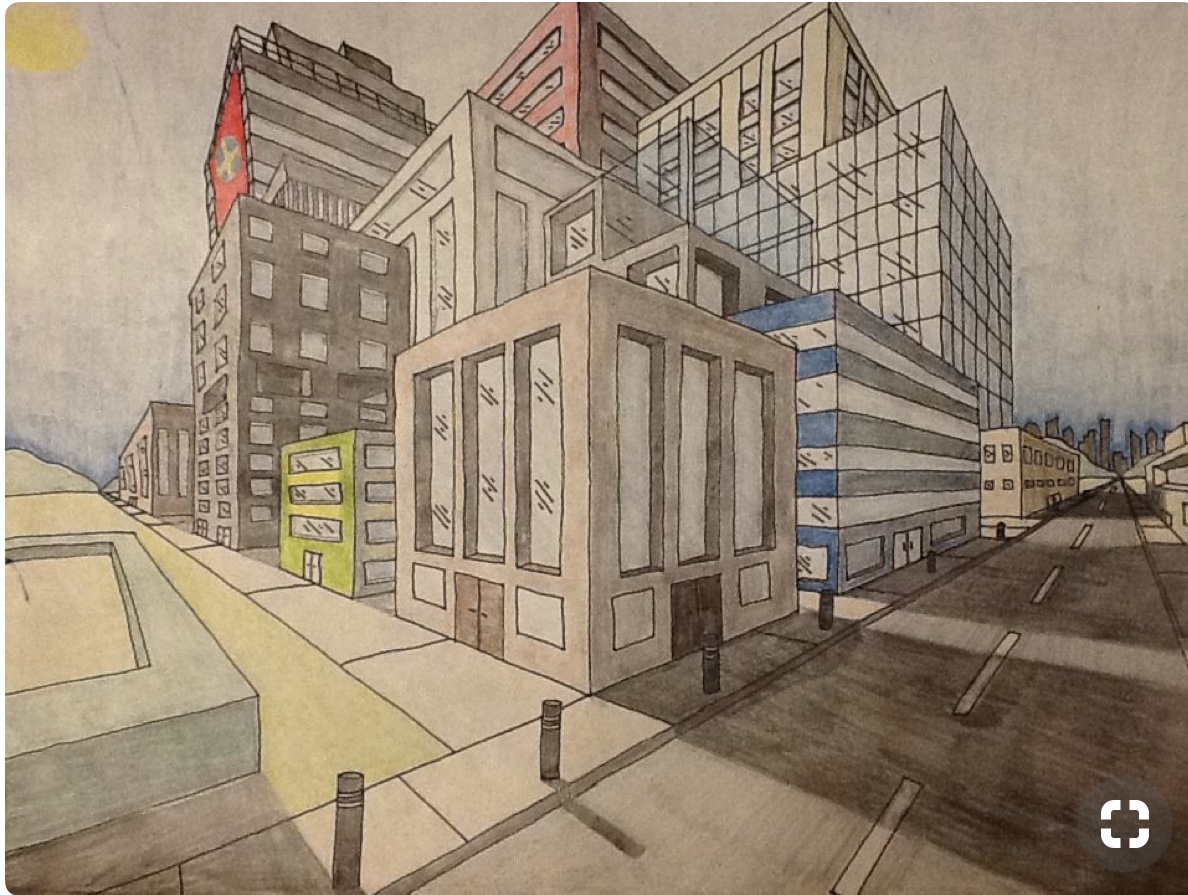

The point of view is the location from which the perspective drawing is viewed. This perspective is used for drawings of buildings or other structures seen from angles or corners, and you can see two sides left and right. Two-point perspective is a type of perspective drawing in which all lines converge to two vanishing points. This perspective is used to draw buildings or other structures seen from the front or the side. One-point perspective is a type of perspective drawing where all lines converge to one vanishing point. These vanishing points typically occur in the center of each side of the object when drawing in a three-point Perspective. Three vanishing points represent an object’s front, left, and right sides in a three-point perspective. Vanishing PointĪ vanishing point is a point on the horizon where all parallel lines appear to converge or vice versa. In a perspective drawing, the horizon line represents the viewer’s eye level and determines the placement of objects in the drawing. The horizon line is the line where the earth meets the sky. Basic Concepts in Three-Point Perspective Drawing Horizon Line Overall, the three-point perspective is one of the most effective ways to create depth in drawings, as it accurately represents how we see the world around us. Overall, the three-point perspective is a powerful tool that artists use to create convincing and dynamic drawings that appear to have depth and movement.Īdditionally, the three-point perspective uses various drawing tools and techniques to create convincing perspectives, such as curvilinear perspective for more complex forms or oblique perspective for objects viewed at an extreme angle. In addition, the three-point perspective can also utilize different lighting effects or perspectives to create a sense of movement or depth within a drawing. The objects closer to the viewer will appear larger and more detailed, while things further away will be smaller and less intricate. This is done by drawing lines that appear to recede into the distance and using different colors or shades to indicate how far away an object is. The three-point perspective creates the illusion of depth in drawings by using three vanishing points to make sense of depth.

How does the Three-point Perspective create the Illusion of Depth in Drawings?

And with little practice, you can create compelling and convincing scenes using these techniques. If you are keen on learning about three-point perspective drawing, many online tutorials and videos can walk you through the process. Some of the most popular digital tools for creating this type of artwork include Clip Studio Paint, Manga Studio, or similar programs that can handle complex scenes with multiple layers and perspective grids. Some artists use grids, vanishing points, curves, or cones for various effects. Many different tools and techniques are used in creating a three-point perspective drawing. When replicated in artwork, it looks like there are particular objects close by and certain objects far away at a distance. It creates an illusion of space, distance, and depth. The person looking at an object or camera focusing on the scene is kept in such a way that the vision converges at three points, creating a three-point perspective. The Three-point perspective is a concept where the orthogonal lines converge at three different vanishing points. Frequently Asked Questions What is the Three-point Perspective?.What is the Difference Between Isometric and Perspective Drawings?.How do you Use Three-point Perspective to Create a Drawing?.

Basic Concepts in Three-Point Perspective Drawing.How does the Three-point Perspective create the Illusion of Depth in Drawings?.


 0 kommentar(er)
0 kommentar(er)
